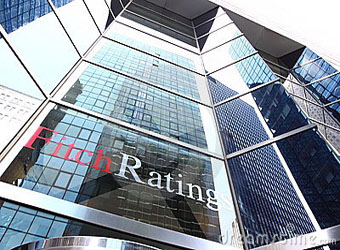China’s stimulus programmes have boosted economic growth, but they’re also creating stability risks, Fitch stated in a report Monday.
For the fourth quarter of 2016, China’s gross domestic product (GDP) rose to 6.8 percent on-year, helping to boost full-year growth to 6.7 percent, which Fitch attributed to stimulus measures.
But the economic growth has come at the cost of delayed reforms and increased leverage, Fitch said in a report titled “China’s stable growth reflects stimulus not sustainability.”
“Short-term growth targets have been prioritised over some areas of structural reform, particularly efforts to reduce the economy’s dependence on credit-intensive investment. Policy stimulus has succeeded in maintaining growth within the official target range, but it has come at the cost of a further build-up in leverage,” Fitch said. “The rapid increase in credit required to keep GDP growing at its current rate strongly suggests that a sustainable rate of medium-term economic growth – in which leverage and broader imbalances stabilise – is well below the authorities’ prevalent growth targets.”
The effort to keep growth up to target levels has become a “more significant risk” to economic stability, Fitch said, noting that aggregate financing has been rising faster than nominal GDP, pushing up the country’s debt-to-GDP ratio.
Aggregate financing excluding equity grew 12.4 percent in 2016, compared with nominal GDP of 8.0 percent, Fitch noted.
The ratings agency noted that state-owned enterprises (SOE) boosted fixed-asset investment by 19.1 percent last year, up from 10.7 percent growth in 2015.
“Outside of the SOE sector, fixed-asset investment growth slowed markedly, underlining the importance of stimulus in propping up demand and highlighting the risk that the economy might lack self-sustaining growth momentum,” it said.
For the full year, fixed-asset investment rose 8.1 percent, slightly below a Reuters poll forecast for 8.3 percent, with Reuters noting that was the slowest pace of growth since 1999, during the Asian financial crisis.
Fitch estimated that China’s GDP growth would slow to 6.4 percent in 2017 and 5.7 percent in 2018.
But Fitch added that while continued fund outflows from the mainland were likely to continue to pressure the currency and foreign reserves, that wasn’t likely to be “systemically threatening.”
Earlier this month, China reported that its foreign exchange reserves dropped for a sixth straight month in December, declining by $41 billion for the month, to $3.011 trillion, the lowest since early 2011.
But the ratings agency noted that foreign reserves adequacy was the fifth-highest among Fitch-rated sovereigns.
“Fitch’s base case remains that China’s large debt burden will translate into substantially slower economic growth by the end of the decade rather than an outright financial crisis,” it said. “A significant proportion of banks and borrowers in China’s financial system are either directly owned by the state, or heavily state influenced, which guards against the kind of collapse in creditor confidence that might trigger a crisis.”
Source: CNBC


